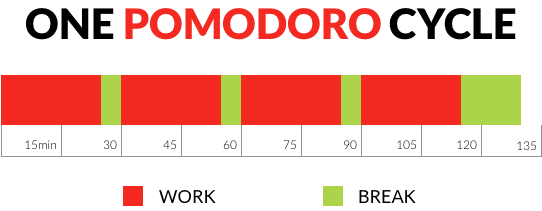Here’s exactly how long your work breaks should be – A Life of Productivity
Estimated Reading Time: 3 minutes, 18s.

One of my favorite ways to become more productive is counterintuitive: by taking more breaks.
When you frequently step back from your work, you may feel less productive because you’re not working during that time. But breaks allow you to accomplish more because they let you replenish your energy reserves, recharge your focus, step back from your work to make creative connections, and reevaluate your goals or how you approach your work in the first place. As Tony Schwartz, CEO of The Energy Project, put it, “Without any downtime to refresh and recharge, we’re less efficient, make more mistakes, and get less engaged with what we’re doing.”
Before we dive deeper into this post, here’s a quick note on guilt. Guilt is often what motivates us to work straight through tiredness and fatigue—when we’re busier, we feel more productive and less guilty. But at the end of the day, productivity isn’t about how much we do, it’s about how much we accomplish. Breaks help you work smarter and accomplish more.
This makes taking breaks critical. If you do knowledge work for a living, your work benefits from all the energy and focus you can possibly bring to it. This means the time you spend taking breaks will pay for itself in increased focus and energy—assuming you don’t play hooky for most of the day.
What’s the optimal amount of time to break for? Thankfully, science is able to tell us.
In the morning: Break (at least) every 90 minutes
Throughout the day, our energy moves up and down in waves, similar to when we sleep. When we sleep, we sleep in 90-minute cycles; each cycle alternates between periods of light, deep, and REM sleep. We have a similar rhythm during the day, too; in the morning, our bodies have been shown to alternate between 90-minute periods of wakefulness, punctuated by a smaller period (20-30 minutes) of sleepiness.1
We can take advantage of this natural rhythm by working for 90-minute chunks of time in the morning, and then breaking for at least 20 minutes—when we naturally begin to feel groggy again.
In the afternoon: Use the pomodoro technique
By the afternoon and evening, our biological rhythms begin to stabilize—though our energy reserves will still become depleted when we don’t break frequently enough. Because of this, the pomodoro technique works best in the afternoon.

The technique is simple: you work on just one thing for 25 minutes, and then take a five minute break. Repeat this three more times. When the fourth time comes around, take a break for 25 minutes (or more). This technique works well because it forces you to focus on one thing, and it structures taking breaks into your working routine so you recharge along the way.
In General: Break for 17 minutes every 52 minutes
DeskTime, a company that makes an app that tracks people’s computer usage, recently discovered something curious: when they looked at the top 10% of productive workers, they found that the workers took, on average, a 17 minute break after working for 52 minutes.2
Because everyone is wired differently, breaking for 17 minutes after every 52 minutes of work may not be the right fit for you, but it does serve as a good guide for how frequently you should be stepping back from your work. While this number is pretty specific, I think taking a 15-minute break every hour is a great place to start—it’s worth trying out, and then observing how much you accomplish with the ritual.
Intriguingly, breaking for 17 minutes every 52 minutes is roughly the same ratio of time you’ll break for under the Pomodoro technique. On a Pomodoro cycle, when you average out how long you break for over 52 minutes, it’s about 21 minutes, compared to 17 in this study. Pretty close.
Both ideas indicate something important: to become more productive, you should step back from your work more frequently to recharge.
